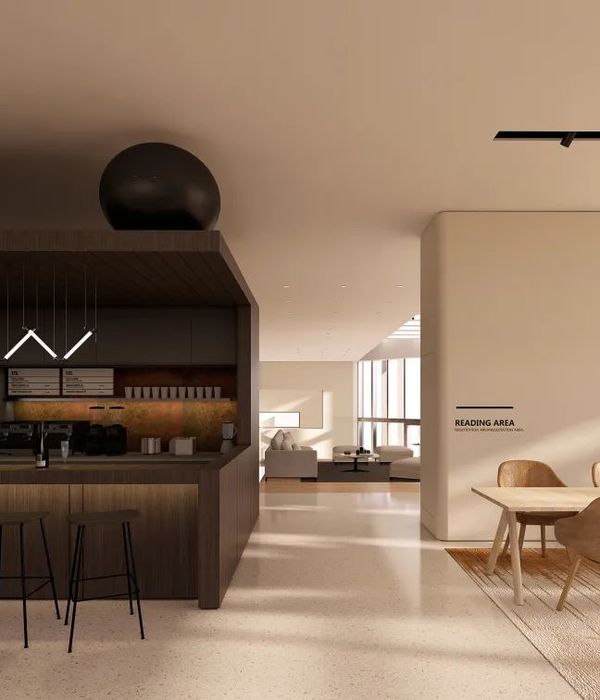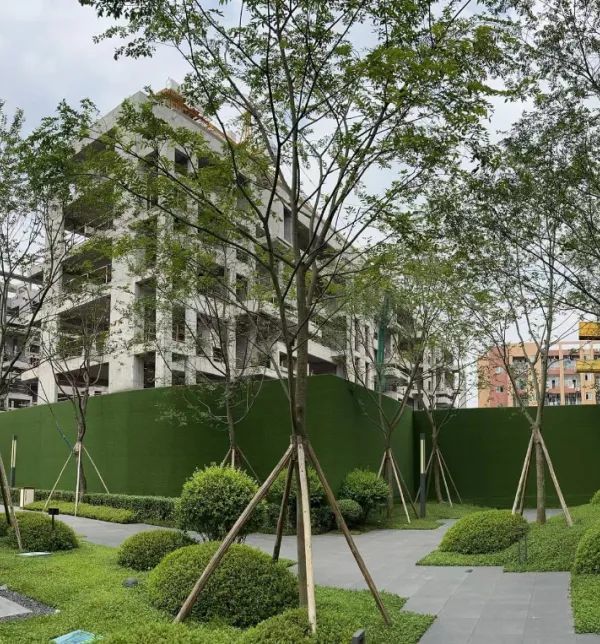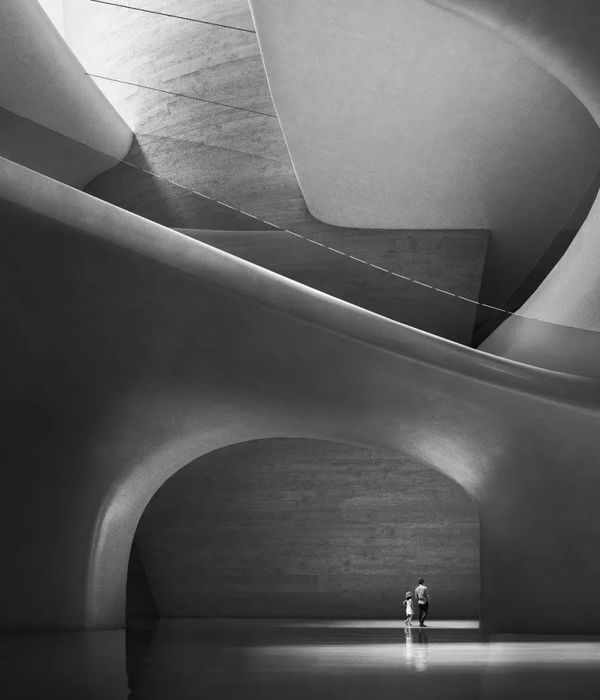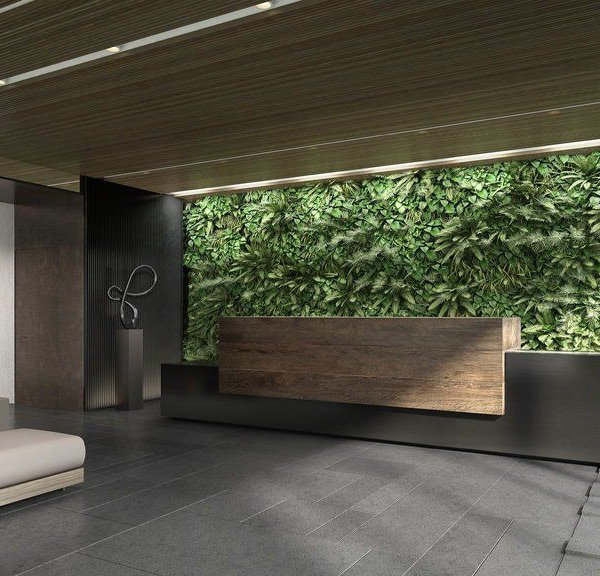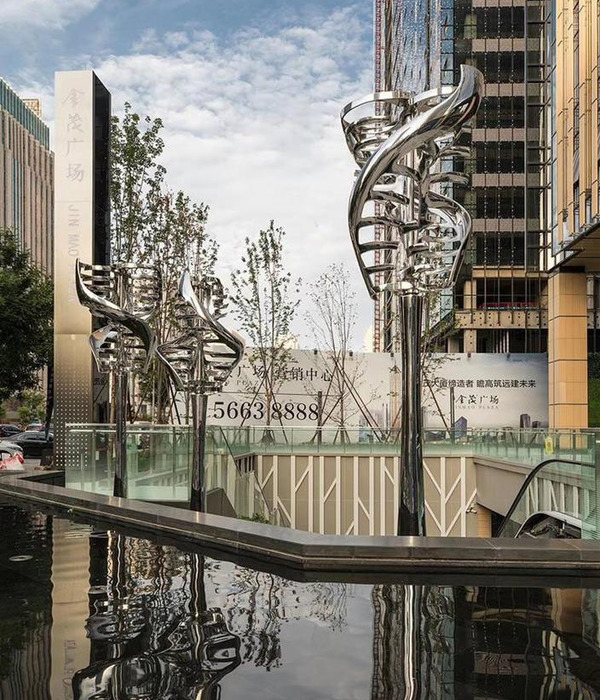“The fact that it’s still there, intact, is important. It’s one of the best uses of space in our country. . . When it was completed, what it did for the people in the financial district was it allowed them to get out of their offices and experience nature in an urban environment. It created a whole new world”
– 2014 Awards Jury
“事实上,它仍然在那里,完好无损,这是很重要的。这是我国最好的空间利用之一。当它完成后,对于人们而言,在金融区可以允许他们离开他们的办公室,在城市环境中体验自然。它创造了一个全新的世界”.
– 2014评审团
20141ASLA
Norman B. Leventhal Park at Post Office Square by
Halvorson Design Partnership, Inc.
更多请至:
Halvorson Design Partnership, Inc.
邮局广场的Norman B. Leventhal公园说明梦幻般的创意是如何通过优秀的设计实现的。这个1.7英亩的公园自开业起就非常受欢迎,是波士顿市中心复兴计划的一部分。拥有7层地下车库,仍然是公私合作典范,是当代设计与城市环境和谐相处的典范。邮局广场的公园已成为21世纪城市公园的典范,受到设计师、公共倡导者、市政官员和教育者的推崇。
Norman B. Leventhal Park at Post Office Square illustrates what can happen when a visionary idea is realized through excellent design. Enormously popular from the day it opened, this 1.7-acre park is often credited with jump-starting Boston’s downtown revival. Built on the roof of a 7-level underground garage, it continues to be a model of public-private cooperation and stands as an exemplar of contemporary design in harmony with its urban surroundings. The Park at Post Office Square has become a model for center city parks in the 21st century, cited by designers, public advocates, municipal officials and educators, alike.
▲“还有什么比波士顿邮局广场新公园更贴近我们,能获得公众和专业设计师更多的赞许呢?”
“Was anything built in Boston, ever, more embraceably ours, more instantly loved by both the public and the professional designers, than the new park in Post Office Square?”
Image Credit: Ed Wonsek. Robert Campbell, Boston Globe architecture critic.
“邮局广场公园永远改变了波士顿,……为城市提供深不可测的错综复杂的街道和建筑。在它周围,仿佛有着磁性或魔法,整个市中心都聚集在一个有序的阵列中。仿佛建筑物被拉到公园周围,就像露营者围绕着营火一样。”
– Robert Campbell,波士顿环球报建筑评论家
邮局广场首次出现在1887年,是波士顿的新主要邮局的公有化场所。在过去的几十年里,“广场”进行了重铺,直到1954年才进一步改善。那一年,邮局已经搬迁,这座城市将广场租给了当地出租车大亨,他在该地建造并运营了一个停车场,租约长达40年。不久以后,“停车场单元 3”缺乏维护并且满是垃圾,出现了显著恶化。建筑物建立在车库后方。许多观察家都认为该车库为整个市区蒙上了一层阴影。景观建筑杂志称其为“可怕的结构,在波士顿金融区铸造了一个邪恶之眼。”
该状况在20世纪30年代早期出现变化。波士顿知名开发商Norman B. Leventhal,成为停车场单元3的邻居,为了波士顿联邦储备银行,他在附近1922个建筑旁边开发了一个豪华酒店。不久之后,Leventhal决心消除金融区中难看的污点。他开始聚集一些波士顿最有创意的商业人才。他们一起想出了一个创新的融资方式,并且决定开发一个公园,公园将在停车场上建立。通过技术和法律分析的支持,该集团成立于1983年,叫做“邮局广场友人有限公司”,并且立即承诺要找到一种方式在年底前租约到期前获得车库。同时,他们着手筹集私募基金来进行车库和公园的设计和施工。到了1987年,公司实现了这些目标。
在早期的时候,公司有三个关键步骤:(1)他们前往其他城市获得第一手资料,观察什么样的公园设计元素是成功的(和其他);(2)他们在SOM与主要的城市设计师一起工作,制定一个精密的、简洁的定义用户和公园用途的公园程序语句,阐述设计目标和需求;(3)他们用一个广泛的国际竞争来挑选设计师。
设计
“我们设计的邮局广场公园是波士顿市区的一个表现,其具有独特的文化,价值和生命力。因为我们认为波士顿是一个特殊的城市,所以这个公园也必须成为一个有着特殊艺术价值的独特的和引人注目的空间。” -来自景观建筑事务所提交的方案赢得了这竞争。
该公园的设计方案力图创造一个向公共开放的新市区绿地,它有着丰富的细节和视觉兴趣,承认该地区的建筑遗产,与密集的城市结构周围的公园相比提供了一个很好的理念。设计团队的理念认真遵循客户的详细规划,如要求公园50%应该有硬景观的特征,有着郁郁葱葱的树木。
公园被设计成一个花园。其最突出的特性是一个开放的草坪被大型落叶树的上层林冠环绕着。从公园中可以清晰地看到周围的街道,公园入口的焦点轴引起了人们的好奇心并吸引了许多人。矮墙是为公园内部而设计的,作为道路的边缘和休息的座位,而路边和草坪外围有一个广阔的视野,允许路人来享受公园的美景。这些可透边缘也对公园内部的强大安全感的提供产生了影响。
在公园里的广场两端提供了主要的焦点元素的设置。北广场设有雕塑家Howard Ben Tré建造的主要喷泉/雕塑。一个花园网格连接了两个广场,提供了一个荫遮长廊。这种绿廊形成了中央草坪面积的背景并且兼顾作为一个舞台和表现空间。公园内的主要特色建筑设立在南广场:双玻璃和铜质结构,风格花园馆,全年开放的咖啡馆和地下行人通道。这些位于公园的南部边缘的建筑可以接纳很多游客,那里往返广场的上班族人群最多。
与这个公园的原始设计表达相关的元素仍然可以看到和感受到。除了一些恢复活力的植被,那些生长过大的植物材料被移除,取而代之的是在内部改建一个咖啡馆和一个新的地图亭,在23年后所有设计的公园元素仍保留在此处。
意义
这个公园的许多方面都非常重要。这是一个早期的、成功的“密集屋顶绿化”项目。哈佛大学的一项邮局广场附近性能的研究表明在公园开放后,周围的房地产价格大幅增加。这可以说明,当遵循设计原则时,“公园计划”将产生强有力的影响。
“邮局广场的美丽并不简单,它是一个目的地,是一个人寻找阴凉的吃午餐的地方,这也是一个十字路口,是进入广场的人民聚集路径的地方。你可能因为你的业务而四处走动,然后突然发生在这个美妙的休息处。找个机会花一点时间来休息和静静地坐着,或看你周围的人类,这些都是公共场所提供的最好的东西。” -美国建筑师协会会员Alex Krieger,NBBJ建筑设计事务所Chan Krieger,负责人;哈佛大学,城市规划与设计学院,前主席
“邮局广场公园是一个真实的地方,有自己的鲜明特色的集中领域。草坪上有自己的形状:他声称自己那样做的原因是因为当你在那里时,你会觉得你是在中心,而不是两个更重要场所间的通道。因此,你可以感受到在休息。…这就是好的设计。”
– Robert Campbell,波士顿环球报建筑评论家,2004
邮局广场友人公司的总经理Pamela Messenger经常提到“城市需要标志性的地方。在邮寄广场上的Norman B. Leventhal公园必定是这样的一个地方:它是一个设计能经受时间考验的很好地例子。
▲ 停车场单元3(1954 – 1989)。
Parking Garage Unit 3 (1954 – 1989).
Photo Credit: Friends of Post Office Square
Photo Credit: Halvorson Design Partnership, Inc.
▲ 咖啡馆的建筑通过精心设计,尽可能地被透明化,在公园内不是压倒性的存在。
The café building was carefully designed to be as transparent as possible—a recognizable, but not overpowering presence in the park.
Photo Credit: Halvorson Design Partnership, Inc./Ben E. Watkins
▲ 该设计仔细研究分析了周围高楼大厦的影子,在阳光最强烈的地方定位了大草坪。
The design carefully analyzed shadow studies for the surrounding tall buildings to locate the Great Lawn in the sunniest portion of the site.
Photo Credit: Ed Wonsek
▲免费的草坪靠垫从来没有丢失过。“人们觉得它们属于公园。这就是为什么他们能够很好地对待它。如果你呼吁了人民更好的本能,他们就能相应地回应。”
– Alan Leventhal,公园创建者之子
The free lawn cushions are always returned. “People feel the park belongs to them. That’s why they treat it so well. If you appeal to people’s better instincts, they respond accordingly.”
– Alan Leventhal, son of the park’s “founder”
Photo Credit: Ed Wonsek
▲ 143英尺长的藤架在晴天下提供了斑斓的树荫,有着面临草坪的柚木长椅。这个特色连同其后方的植物完全遮蔽了珍珠街的车道。
The 143-foot-long pergola provides dappled shade on sunny days, with teak benches facing the lawn. Together with the planting behind it, this feature completely screens the Pearl Street garage ramps.
Photo Credit: Ed Wonsek
▲作为公园的管理人员,邮局广场友人有限公司为公园游客提供了许多额外便利设施,如在草坪上使用的免费垫、免费清晨健身器材、借阅图书馆车和免费午餐时间音乐会。
As the park’s manager, Friends of Post Office Square, Inc. provides many added amenities for park visitors, such as free cushions to use on the lawn, free early morning fitness classes, a lending library cart and free lunchtime concerts.
Photo Credit: Halvorson Design Partnership, Inc./Ben E. Watkins
▲Howard Ben Tré的压铸玻璃,青铜和花岗岩喷泉坚定地(和可易接近地)立在地面上并且进行喷洒,环水通过路面消失,坐落在不锈钢丝网隐藏的下水道中。
Howard Ben Tré’s cast glass, bronze and granite fountain stands firmly (and accessibly) at ground level—and the splashing, recirculating water disappears through the pavement, which sits on stainless wire mesh over the hidden drains.
Photo Credit: Ed Wonsek
▲游客可以选择公园中的不同位置的板凳—草坪,木板凳,花岗岩墙,钢管和咖啡桌,阳光,斑点影和深影。
Visitors can choose from many different seating options threaded and clustered throughout the park—lawn and wooden bench, granite wall, tubular steel and cafe table, sunshine, dappled shadows and deep shade.
Photo Credit: Ed Wonsek
▲从公园内部几乎看不到两组地下车库的进口/出口坡道。
Two sets of access/egress ramps for the underground garage are almost invisible from inside the park.
Photo Credit: Ed Wonsek
(left) Many of the features in the park key on surrounding urban form. Here, the façade of the old Telephone Building provides an axis for the South Plaza and the smaller of Howard Ben Tré’s two fountain sculptures.
Photo Credit: Ed Wonsek
(右)该设计的亲密和更远的视图序列及其各种材质不断发展,材料和焦点的结合给了Norman B. Leventhal公园一个引人注目的和独特的“位置感”。
(right) The design’s continuously evolving sequence of intimate and more distant views and its variety of textures, materials and focal points combine to give Norman B. Leventhal Park a compelling and unique “sense of place.”
Photo Credit: Ed Wonsek
▲(左)绿廊的“屋顶”的中点上树立了一个高圆顶并且在两端上升到较低的金字塔中。
(left) The “roof” of the pergola is surmounted by a high dome at the mid-point and rises into low pyramids at either end.
Photo Credit: Ed Wonsek
(右)“它仿佛有磁性或魔法,整个市中心都聚集在一个有序的阵列中。仿佛建筑物被拉到公园周围,就像露营者围绕着营火一样。”
-Robert Campbell,波士顿环球报建筑评论家。
(right) “As if by magnetism or magic, the whole downtown seems gathered in an orderly array. It’s as if buildings were pulling up to the park like campers around a campfire.”
– Robert Campbell, Boston Globe architecture critic.
Photo Credit: Halvorson Design Partnership, Inc./Ben E. Watkins
▲总平面 Site Plan
Photo Credit: Halvorson Design Partnership
“Post Office Square Park has changed Boston forever, … (providing) a center for the city’s unfathomable maze of streets and buildings. All around it, as if by magnetism or magic, the whole downtown seems gathered in an orderly array. It’s as if buildings were pulling up to the park like campers around a campfire.”
– Robert Campbell, Boston Globe architecture critic
Post Office Square first emerged in 1887 as the publicly-owned forecourt for Boston’s new Main Post Office. Over the decades, the “square” was repaved but otherwise not improved until 1954. In that year, after the Post Office had relocated, the City made a deal with a local taxi magnate to build and operate a parking garage on the site, under a 40-year lease. Before long, “Parking Garage Unit 3,” poorly maintained and strewn with trash, had deteriorated significantly. Surrounding buildings turned their backs to the site. To many observers, the garage was a blight on the entire downtown area. Landscape Architecture Magazine called it a “hideous structure, casting an evil eye on Boston’s Financial District.”
Things began to change in the early 1980s. Norman B. Leventhal, a prominent Boston developer, became a neighbor of Garage Unit 3, when he developed a luxury hotel in an adjacent 1922 building originally built for the Federal Reserve Bank of Boston. Soon thereafter, Leventhal resolved to rid the financial district of its unsightly blemish. He started by gathering some of Boston’s most creative business minds. Together they came up with an innovative approach to financing and developing a park that would be supported by a new parking facility to be built beneath it. Encouraged by technical and legal analyses, the group incorporated in 1983 as “Friends of Post Office Square, Inc.”—and promptly undertook to find a way acquire the site before the end of the lease. Simultaneously, they set about raising private funds to cover design and construction of the garage and the park. By 1987, the Friends achieved both of these goals.
Early on, the Friends took three more critical steps: (1) they traveled to other cities to see, first-hand, what park design elements were successful (and otherwise); (2) they worked with leading urban designers at SOM to craft a well-thought-out, succinct Park Program Statement, that defined users and uses for the park, spelled out design objectives and requirements; and (3) they administered an extensive national competition to select a designer.
The Design
“We have designed Post Office Square Park to be an expression of downtown Boston, its unique culture, its values and its vitality. Because we believe Boston is a special city, we believe this park must also be a distinctive and compelling space, of exceptional artistic merit.”
– from the submission of the landscape architecture firm that won the competition.
The design scheme for the park sought to create new downtown green space open to the public—one that was rich in detail and visual interest, that recognized the area’s architectural heritage, and that provided welcome relief and contrast to the dense urban fabric surrounding the park. The design team’s concept meticulously followed the client’s detailed program, such as the requirement that 50% of the park should be hardscape—a characteristic that users of the leafy park are usually astonished to learn.
The park was designed to be a garden for all seasons. Its most prominent feature is an open lawn on surrounded by an over-story of large deciduous trees. Clear sight lines were established into the park from surrounding streets, with focal points on axis with park entrances to arouse curiosity and draw people in. Low walls were designed for the park’s interior, serving as path edges and seating, while curbs and lawn around the periphery permit broad views in and allow the park to be enjoyed by passersby. These permeable edges also have the effect of providing a strong feeling of security within the park.
Plazas inside the park at each end provide the setting for major focal elements. The North Plaza features sculptor Howard Ben Tré’s major fountain/sculpture. A garden trellis connects the two plazas, providing a shaded promenade. This pergola forms a backdrop to the central lawn area and doubles as a stage and performance space. The primary architectural features within the park are in the South Plaza: two glass-and-copper structures, styled as garden pavilions, which house a year-round café and pedestrian access to the underground garage. These buildings are well located to receive patrons at the park’s southern edge, where the greatest numbers of office workers travel to and from the Square.
The relevance of this park’s original design expression continues to be seen and felt. With the exception of rejuvenation of vegetation, removal of some plant material that had grown too big, internal remodeling of the café and a new map in the map kiosk, the park design in all its elements is still in place after 23 years.
Significance
Many aspects of this park are significant. It was an early, successful “intensive green roof” project, years ahead of its time. A Harvard study of properties in the vicinity of the Post Office Square documented significant increases in real estate values after the park opened. And it is a demonstration of how powerful a carefully considered “Park Program” can be when followed faithfully by a strong design effort.
“The beauty of Post Office Square isn’t simply that it’s a destination, a place for people seeking a shady spot to eat lunch: It’s also a crossroads — a welcoming, accessible concourse where people’s paths converge. You could be going about your business, and suddenly you happen on this wonderful refuge. The opportunity to take a moment to rest and to sit quietly in nature, or to watch the human theater around you — those are the things that the best public spaces provide.”- Alex Krieger FAIA, Principal, Chan Krieger NBBJ; former Chair, Harvard University, Department of Urban Planning and Design.
“Post Office Square Park is a real place—a centered domain with its own definite character. The lawn has a shape of its own: it asserts itself, so that when you are there, you feel you are somehow at a center, rather than a passage between two more important places. You can feel, therefore, at rest. … This is what good design is all about. “- Robert Campbell, Boston Globe architecture critic, 2004
Pamela Messenger, General Manager for the Friends of Post Office Square, often remarks that “cities need iconic places.” Norman B. Leventhal Park at Post Office Square is assuredly such a place: an excellent example of design that stands the test of time.
MORE:
Halvorson Design Partnership, Inc.
更多请至:
Halvorson Design Partnership, Inc.
{{item.text_origin}}


